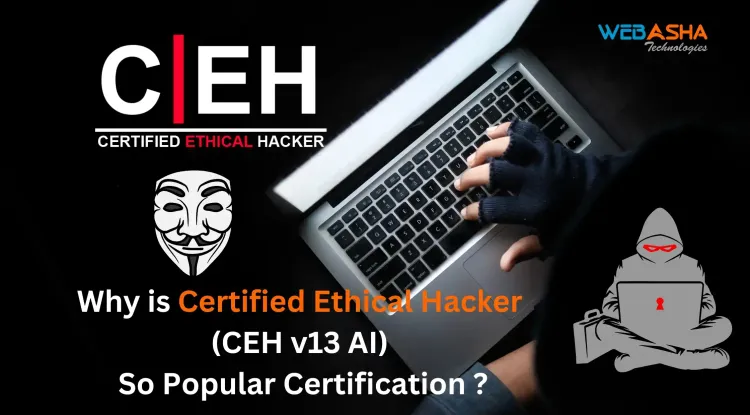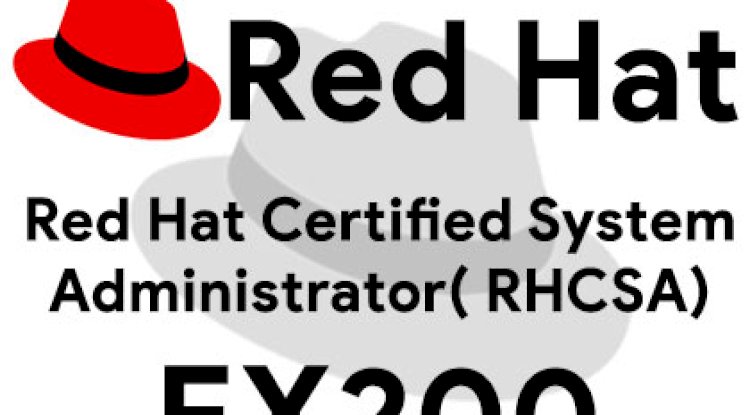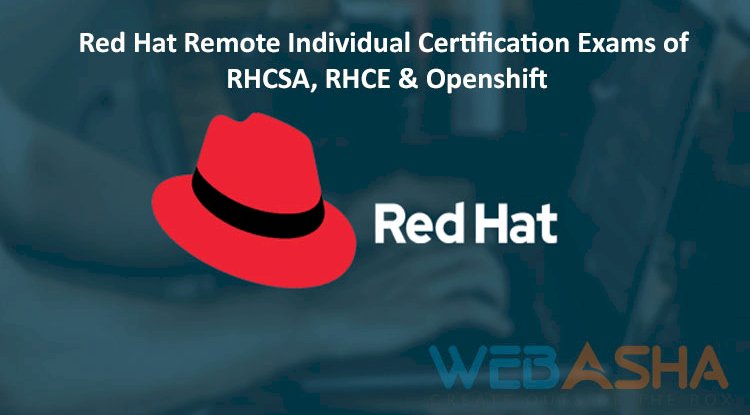How to Get Started with Penetration Testing and Gain Practical Experience
Gaining hands-on experience in penetration testing is an essential step toward becoming a skilled and effective ethical hacker. Setting up your own testing lab, participating in CTF challenges, joining bug bounty programs, contributing to open-source projects, enrolling in specialized courses, freelancing, and networking with industry professionals will help you develop practical skills. With the right combination of theoretical knowledge and real-world experience, you can advance your career in penetration testing and make a significant impact in the field of cybersecurity.

Table of Contents
- What is Penetration Testing?
- Why Ethical Hackers Need Programming Knowledge
- How to Gain Hands-on Experience in Penetration Testing
Penetration testing, also known as ethical hacking, is one of the most sought-after skills in the cybersecurity industry. It involves identifying and exploiting vulnerabilities in systems, networks, or applications to help organizations improve their security posture. However, like any technical field, mastering penetration testing requires hands-on experience, a solid foundation in theoretical knowledge, and an understanding of real-world applications. In this blog, we will explore various ways to gain practical experience in penetration testing and enhance your cybersecurity skills.
What is Penetration Testing?
Penetration testing involves simulating cyber-attacks to evaluate the security of an organization’s systems, networks, or applications. The goal is to identify vulnerabilities before malicious hackers can exploit them. Penetration testers, or ethical hackers, use a variety of techniques, including network scanning, vulnerability exploitation, and social engineering, to assess security weaknesses and recommend mitigation strategies. To excel in this field, hands-on experience is crucial, as it allows you to apply theoretical concepts in real-world scenarios.
Why Hands-on Experience is Crucial in Penetration Testing
The theoretical knowledge you acquire in penetration testing provides a foundation, but practical skills are what truly set you apart. Hands-on experience is essential for several reasons:
-
Real-world Application: It helps you apply theoretical concepts to real systems and networks, allowing you to gain insights that can’t be obtained from books or videos.
-
Developing Problem-solving Skills: Penetration testing requires creative thinking and problem-solving, as no two systems are identical. Hands-on experience teaches you how to adapt to new environments and identify unique vulnerabilities.
-
Tool Familiarity: A penetration tester needs to be proficient with a wide range of tools like Nmap, Metasploit, Burp Suite, and Wireshark. Hands-on practice is the best way to learn how to use these tools effectively.
-
Learning from Mistakes: In cybersecurity, mistakes are a valuable learning tool. Hands-on experience lets you make errors in a safe environment, helping you learn from them without causing any harm.
How to Gain Hands-on Experience in Penetration Testing
Now that we understand the importance of hands-on experience, let’s dive into practical ways to gain it.
1. Set Up Your Own Lab
One of the best ways to gain practical experience is by setting up your own penetration testing lab. This will allow you to experiment in a controlled environment without the risk of causing harm to real-world systems.
How to Set Up Your Penetration Testing Lab:
- Virtualization: Use tools like VirtualBox or VMware to create virtual machines for testing. Set up multiple VMs, including vulnerable operating systems (e.g., Kali Linux, Metasploit, or Windows Server).
- Intentionally Vulnerable Machines: Download intentionally vulnerable machines such as DVWA (Damn Vulnerable Web Application), WebGoat, or Metasploitable. These machines are designed for security testing and can help you practice various penetration testing techniques.
- Networking Setup: Set up your virtual network to simulate real-world environments, and use firewalls and routers to mimic complex network infrastructures.
2. Participate in Capture The Flag (CTF) Challenges
Capture The Flag (CTF) competitions are designed to test your penetration testing skills in a fun, gamified environment. These challenges often involve solving security-related puzzles and exploiting vulnerabilities in various systems. Participating in CTFs will help you hone your problem-solving skills, improve your knowledge of various security concepts, and allow you to work under time pressure.
Popular CTF Platforms:
- Hack The Box: A popular platform with a wide variety of challenges designed to test real-world penetration testing skills.
- TryHackMe: Another platform offering beginner to advanced CTF challenges, with guided lessons for those new to ethical hacking.
- CTFtime: A website that aggregates CTF competitions from around the world, where you can participate as an individual or team.
- Root Me: Offers a wide range of penetration testing challenges that cover different aspects of security.
3. Participate in Bug Bounty Programs
Bug bounty programs are initiatives by companies where ethical hackers are rewarded for finding vulnerabilities in their systems. Participating in a bug bounty program is an excellent way to gain real-world penetration testing experience while also earning money.
Popular Bug Bounty Platforms:
- HackerOne: One of the largest platforms, where companies like Uber, Twitter, and Yahoo post vulnerabilities that need to be found and reported.
- Bugcrowd: Offers various bug bounty programs for security researchers to test systems and report vulnerabilities.
- Synack: Another platform offering bug bounty programs with a focus on high-end security testing.
4. Contribute to Open-Source Penetration Testing Projects
Contributing to open-source projects is a great way to gain experience and improve your skills while also contributing to the community. Many penetration testing tools are open source, and helping with their development allows you to work on real-world projects, collaborate with experienced professionals, and enhance your understanding of penetration testing techniques.
Notable Open-Source Penetration Testing Projects:
- Metasploit: A powerful framework for developing and executing exploits, and a major tool used in penetration testing.
- Nmap: A network scanner that is widely used for network discovery and security auditing.
- Wireshark: A network protocol analyzer used to capture and analyze network traffic.
- Burp Suite: A tool for web application security testing, widely used in the industry.
5. Enroll in Online Courses and Bootcamps
Online platforms and bootcamps offer hands-on labs and practical exercises to help you gain experience in penetration testing. These courses are designed to provide structured learning paths that guide you through real-world scenarios while giving you access to virtual environments.
Popular Learning Platforms:
- Udemy: Offers several penetration testing courses, including ethical hacking and hands-on labs.
- Cybrary: A platform that offers practical training on a variety of cybersecurity topics, including penetration testing.
- Offensive Security’s PWK (Penetration Testing with Kali Linux): The OSCP certification, which is highly respected in the industry, provides hands-on labs and practical exercises in penetration testing.
6. Work on Freelance Projects
Freelancing as a penetration tester can help you gain hands-on experience in real-world environments. Many businesses, especially small and medium-sized enterprises (SMEs), seek independent contractors to perform security assessments and vulnerability scans.
Freelance Platforms for Penetration Testers:
- Upwork
- Freelancer
- Toptal
7. Join Local Security Communities and Networking Events
Being part of security communities helps you stay up to date on the latest trends and technologies in penetration testing. Participating in local security meetups, conferences, or workshops can give you opportunities to collaborate with experienced professionals and gain insights into the latest industry developments.
Security Communities:
- OWASP (Open Web Application Security Project): A global community that focuses on improving the security of software.
- DEF CON: One of the largest and most famous hacking conferences in the world, where penetration testers gather to exchange knowledge and ideas.
- BSides: A series of security conferences that take place globally, where hackers, security researchers, and penetration testers can collaborate and share knowledge.
FAQ:
-
What is penetration testing?
Answer: Penetration testing, also known as ethical hacking, is the practice of simulating cyber-attacks on systems, networks, or applications to identify vulnerabilities that could be exploited by malicious attackers. It helps organizations improve their security by finding weaknesses before they are exploited.
-
Do I need to be a coding expert to start penetration testing?
Answer: No, you don’t need to be a coding expert to begin penetration testing. While programming knowledge can enhance your testing capabilities, many tools available in the market allow beginners to start testing without advanced coding skills.
-
Can I practice penetration testing at home?
Answer: Yes, you can set up a penetration testing lab at home using virtual machines to simulate different systems. Platforms like Hack The Box and TryHackMe also offer practical labs for beginners to practice penetration testing safely.
-
What tools do I need for penetration testing?
Answer: Some popular tools for penetration testing include Kali Linux, Metasploit, Nmap, Wireshark, Burp Suite, Nessus, and Nikto. These tools help with tasks such as vulnerability scanning, network analysis, and exploitation.
-
How can CTF challenges help me learn penetration testing?
Answer: Capture The Flag (CTF) challenges are designed to test your penetration testing skills by providing real-world security scenarios. They help you practice identifying vulnerabilities, exploiting weaknesses, and solving puzzles that simulate cyber-attacks.
-
What is the purpose of a bug bounty program?
Answer: Bug bounty programs reward ethical hackers for discovering and reporting security vulnerabilities in software, applications, and websites. These programs allow companies to identify and fix vulnerabilities before malicious attackers exploit them.
-
How do I get started with bug bounty hunting?
Answer: To get started with bug bounty hunting, join platforms like HackerOne, Bugcrowd, or Synack. Familiarize yourself with the target’s application, look for vulnerabilities, and submit your findings for a reward.
-
What is Metasploit, and how is it used in penetration testing?
Answer: Metasploit is a powerful penetration testing framework that allows ethical hackers to exploit known vulnerabilities. It provides tools for discovering and exploiting weaknesses in systems, making it essential for penetration testing engagements.
-
What is Kali Linux, and why is it important for penetration testing?
Answer: Kali Linux is a specialized Linux distribution used by ethical hackers and penetration testers. It comes preloaded with a variety of penetration testing tools, including network scanning, vulnerability analysis, and exploit development tools.
-
What are some beginner-friendly penetration testing resources?
Answer: Some beginner-friendly resources include TryHackMe, Hack The Box, Cybrary, and online courses on platforms like Udemy and Coursera. These platforms offer practical labs and tutorials tailored to beginners in cybersecurity and penetration testing.
-
How long does it take to become proficient in penetration testing?
Answer: The time to become proficient in penetration testing depends on your prior knowledge, learning pace, and dedication. On average, it could take 6 months to 2 years to gain significant expertise, depending on the amount of practice and learning you invest.
-
What programming languages should I learn for penetration testing?
Answer: Some key programming languages to learn for penetration testing include Python, Bash, JavaScript, C/C++, and Ruby. These languages help you automate tasks, develop exploits, and understand vulnerabilities in applications and systems.
-
Is a degree in cybersecurity necessary to become a penetration tester?
Answer: While a degree in cybersecurity can be beneficial, it is not a strict requirement to become a penetration tester. Hands-on experience, relevant certifications, and practical knowledge of ethical hacking techniques can be just as important as formal education.
-
How can I create a penetration testing lab at home?
Answer: To set up a penetration testing lab at home, you can use virtual machines (VMs) with platforms like VirtualBox or VMware. Install operating systems like Kali Linux and vulnerable applications like DVWA or Metasploitable to practice exploiting vulnerabilities.
-
What is the best way to improve my penetration testing skills?
Answer: The best way to improve is through continuous learning and hands-on practice. Engage in CTF challenges, participate in bug bounty programs, contribute to open-source projects, set up a home lab, and join penetration testing communities to stay updated on new techniques and tools.
-
What is the difference between penetration testing and vulnerability scanning?
Answer: Penetration testing is a simulated attack on a system to find and exploit vulnerabilities, while vulnerability scanning is an automated process that identifies known vulnerabilities in a system but does not involve actual exploitation or testing how they might be used in an attack.
-
Can penetration testing be done without causing harm to the target systems?
Answer: Yes, penetration testing is done with the explicit permission of the organization. Ethical hackers follow strict guidelines to avoid causing harm, and testing is conducted in a controlled manner to ensure systems are not disrupted.
-
What is a CTF challenge, and why should I participate in one?
Answer: A CTF challenge is a competition that involves solving security-related tasks, such as exploiting vulnerabilities and gaining access to systems. It helps you practice real-world penetration testing scenarios and sharpen your skills in a safe environment.
-
Can I freelance as a penetration tester?
Answer: Yes, freelancing as a penetration tester is possible. You can offer your services on platforms like Upwork, Freelancer, and Fiverr. Freelancing gives you the flexibility to work on different projects and gain diverse experience.
-
What are the top certifications for penetration testers?
Answer: Some top certifications for penetration testers include OSCP (Offensive Security Certified Professional), CEH (Certified Ethical Hacker), CPT (Certified Penetration Tester), and GPEN (GIAC Penetration Tester). These certifications validate your expertise and help you stand out in the field.
-
How can I contribute to open-source penetration testing tools?
Answer: You can contribute to open-source penetration testing tools by finding bugs, suggesting improvements, or developing new features. Popular open-source projects include Metasploit, Nmap, and Wireshark. Start by learning the codebase and contributing to the documentation or code.
-
What is the OWASP Top 10, and why is it important for penetration testers?
Answer: The OWASP Top 10 is a list of the most critical web application security risks. Penetration testers use this list to identify and prioritize common vulnerabilities like SQL injection, XSS, and insecure direct object references in web applications.
-
What is a red team, and how does it differ from a penetration tester?
Answer: A red team simulates an advanced, stealthy attacker by testing an organization's overall security posture, including physical security, social engineering, and network vulnerabilities. A penetration tester focuses on exploiting specific vulnerabilities within systems.
-
What are the ethical considerations of penetration testing?
Answer: Ethical considerations in penetration testing include obtaining explicit permission from the organization, avoiding damage to systems, ensuring confidentiality, and responsibly disclosing vulnerabilities. Ethical hackers follow strict legal and professional standards.
-
How can I stay updated on the latest penetration testing tools and techniques?
Answer: Stay updated by following cybersecurity blogs, attending conferences (like DEF CON and Black Hat), subscribing to industry newsletters, joining forums like Reddit's NetSec and Stack Overflow, and participating in CTF challenges and bug bounty programs.
-
What are the best bug bounty platforms?
Answer: The best bug bounty platforms include HackerOne, Bugcrowd, Synack, and Cobalt. These platforms offer ethical hackers the chance to earn rewards by identifying vulnerabilities in popular applications and websites.
-
What are some common penetration testing techniques?
Answer: Common penetration testing techniques include network scanning, vulnerability scanning, social engineering, password cracking, exploitation of vulnerabilities, and post-exploitation to gather information and maintain access.
-
What should I include in a penetration testing report?
Answer: A penetration testing report should include an executive summary, detailed findings of vulnerabilities, risk levels, evidence of exploitation, remediation recommendations, and suggestions for improving security measures.
-
Is there a difference between white-hat and black-hat hacking?
Answer: Yes, white-hat hacking refers to ethical hacking, where the hacker works with permission to find and fix vulnerabilities. Black-hat hacking involves illegal activities, where hackers exploit vulnerabilities for malicious purposes.
-
How can I get real-world penetration testing experience?
Answer: You can gain real-world experience by setting up a home lab, participating in CTF challenges, joining bug bounty programs, freelancing, contributing to open-source projects, or working on penetration testing engagements with organizations.












![Top 10 Ethical Hackers in the World [2025]](https://www.webasha.com/blog/uploads/images/202408/image_100x75_66c2f983c207b.webp)

![[2025] Top 100+ VAPT Interview Questions and Answers](https://www.webasha.com/blog/uploads/images/image_100x75_6512b1e4b64f7.jpg)









